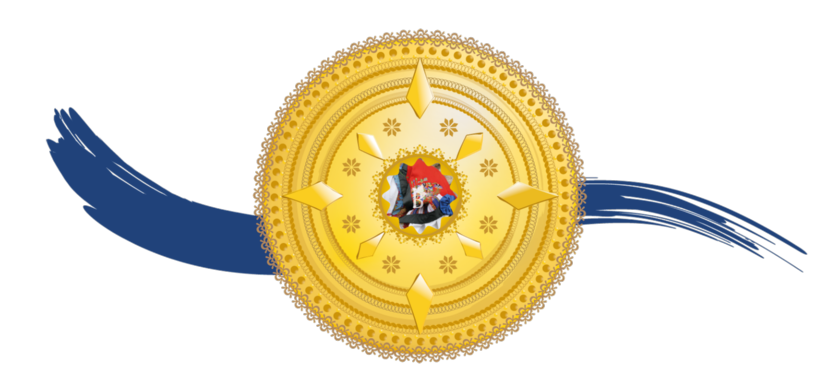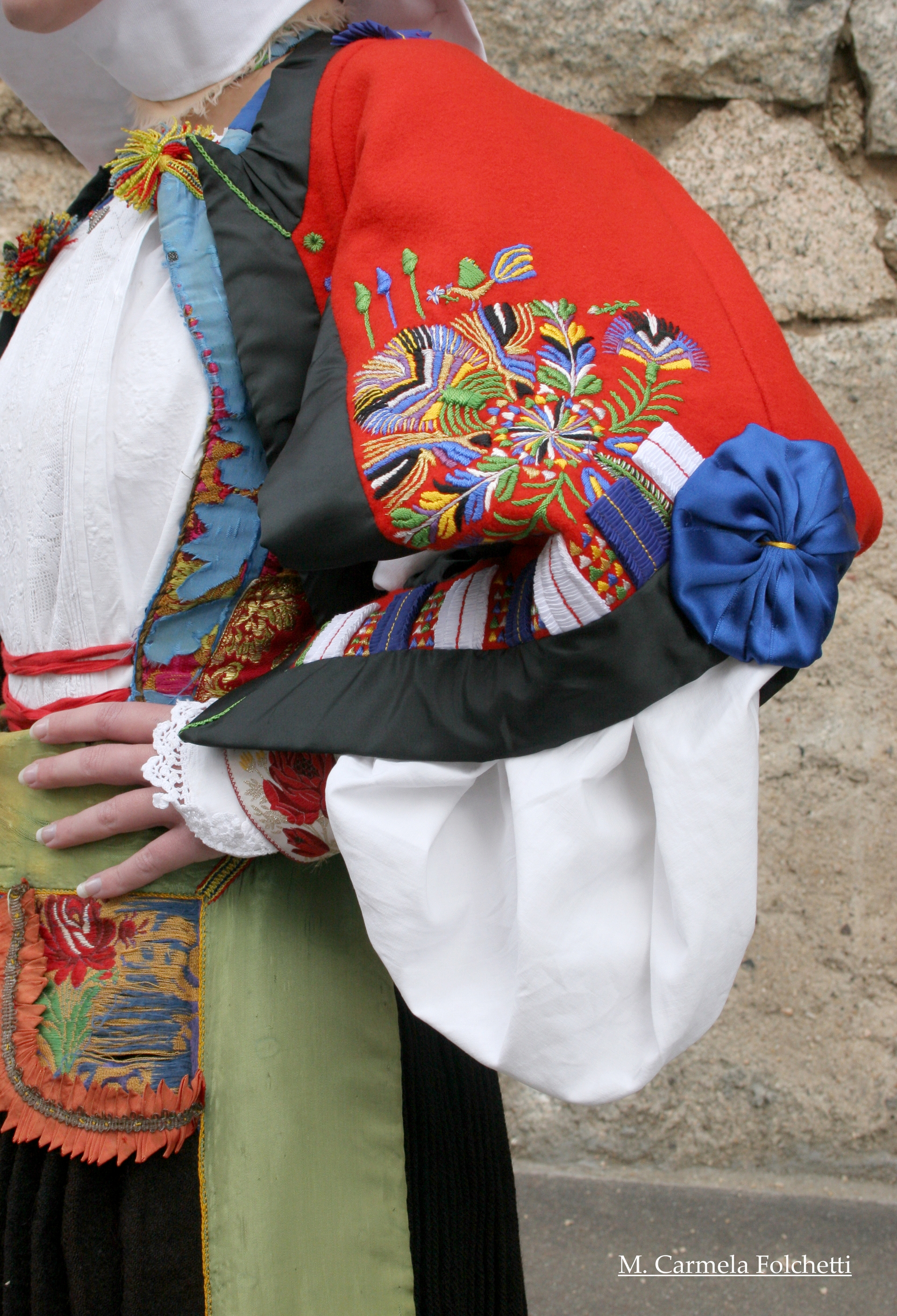In an area surrounded by the Nuraghi around the year 1000 were erected two small rural churches called Santa Maria de susu and de josso , equally distant from the point where the ancient village of Atzara was born.
The area has been inhabited since prehistoric times as evidenced by the archaeological monuments including the domus de Janas, carved out of granite, on the slopes of the hill Corongiu Senes, not far from where the homonymous Nuraghe was built. Ancient Sardinian civilization is traced to the numerous Nuraghic sites: Nuraghe del sole, Ligios, Figu, Su Argedu etc. among all, the best preserved is Abbagadda next to which there is the tomb of giants in which were buried the villagers.
The villa Atzara appears already in condaghe (register) of Santa Maria of Bonarcado of the twelfth century where it mentions the church of St. George. Included in the curatoria of Mandrolisai, in the medieval age the center was part of the Judge of Arborea. The community expanded with the arrival of the population of nearby Leonissa (of Roman origin) which was abandoned in the fifteenth century, and a part of the villa of Spasulee that disappeared between the late seventeenth and early eighteenth century.
The kingdom of Arborea contended until the end for the possession of the Island to the Catalan-Aragonese military power but the war ended in the fifteenth century with the defeat of the Sardinians and even Atzara has, for decades, like many other towns, tried several times to rebel against the conquerors.
To quell the riots in the village there was a fief to noble sardinian families close to the judicial families that respected the Judicial ancient liberties granted by the king of Sardinia. With the death of the last heir of the Marquis of Oristano, Leonardo Cubello, who had tried to lead a revolt against the invaders, the Spanish Crown included Atzara in the royal domain in 1507 and granted its inhabitants and all the Mandrolisai to be ruled by administrators chosen from the local householders.
For a long time peace returned and the town grew: it developed in recent years with the production of wine and cherriesthat madeAtzara inhabitants famous all over the island.
In the eighteenth century, with the passage of the Kingdom of Sardinia first to the Habsburgs and after a few years to the Savoy, the village knew the feudal yoke and the collection of rents was granted to the lordship of the Valentino.
The strong independent nature led the inhabitants to create organizations in order to offer any resistance to the feudal lord: when the reform of 1771 was instituted before the Consiglio comunitativo (Common council) and then the Monte granatico e di soccorso for the needs of the population. The town finally got rid of feudalism in 1838.
Among the rolling hills, behold the colorful expanses of vineyards that dot the landscape around the town that is Atzara.
The center was already famous in the nineteenth century for the quality and abundance of its wine production which supplied many areas of the island. The varieties of grapes grown are mostly Sardinian Bovale (or Muristellu), Monica and different types of Cannonau from which is created the famous wine Mandrolisai. Atzara is, in fact, included in the list of areas required by regulation for the recognition of the Denomination of Origin "Mandrolisai" reserved to the reds and rosé wines. The quality of the wine are sourced from the special characteristics of the hilly acid soil, on the granites and porphyries, the climate and good sun exposure.
The vineyards are interspersed with cultivated fields and fruit trees surrounded by a thick forest of oaks (Quercus) and oaks (Quercus petraea) covering the mountain Sa Costa. Along the fascinating trails scattered throughout the countryside are majestic specimens of chestnut, hazelnut and walnut that provide the basic ingredients for the production of typical desserts.
All around peonies, broom, thyme and digital give colors and the unmistakable scents of the Mediterranean shrug. The scenery is enhanced by streams and from numerous sources including the one of Laonisa, which offers a beautiful landscape. Here was born the ancient village of Leonissa Disappeared in the fifteenth century, the only remains intact are the ancient church of Santa Maria Bambina.
To the south of the Rio Araxisi, which makes a natural border with Meana Sardo, it is enhanced by the local waterways and continues its path to the Tirso. Along its shores there are wild ducks and herons.
Numerous animal species inhabit the territory: the local wildlife includes wild boars, foxes, weasels, rabbits, hares, Sardinian Euprotto and some specimens of wild deer and mouflon while the skiesare home to the goshawk, buzzard, sparrow hawk, peregrine falcon and the golden eagle.
The town of light and colors that inspired spanish costumbristi painters from the early twentieth century, Atzara conquers its visitors with its precious wonders.
From the main road branches off the twisted streets of the oldest quarters of the city center, to a maze of narrow streets you will discover little gems of the past: medieval houses, built of granite and trachyte, with door and window frames embellished with traditional Sardinian- Hispanic, some of which preserve the reliefs in late Gothic style work of the talented local craftsmen who carved the stone called picapedres .
To the narrow spaces of the streets are opposing openings of the squares where the churches are. The oldest is St. Giorgio which has been known since the early thirteenth century, it looks like a small building with a single nave with a smooth stone facade topped by a belfry. The most beautiful church in the village is the parish church of St. Agostino. It was built between the sixteenth and the seventeenth century in late Gothic style, has a façade in typical island style, and embellished by a large rose window above the door ending with a frame on which rest the blackbirds and the cross in the trachyte.
Located all around the church are the old houses characterized by high walls interrupted by doors that open onto patios or loggia (porches). Among them is the palace of the counts of San Martino in which in the XVII century stayed the feudal lords. This is why it is defined as “de su conte” (of the lord); inside the court retains a well with the original dome covered with majolica.
In the square dedicated to the great Spanish painter Antonio Ortiz Echagüe overlooks the Modern and Contemporary Art Museum named after him. The artist was one of the many masters of arts, international and sarda, who settled in the center attracted by the beautiful traditional clothes and the popular events. The museum's collection holds a wide variety of works that document the different artistic trends of the twentieth century.
A few kilometers to the east and west of the town can be found the country churches of Santa Maria de susu and Santa Maria de josso. The first, also called church of Santa Maria Bambina, is one of the most ancient churches of the district. It was erected around the year 1000 probably in the same period in which was constructed the Santa Maria de josso that unfortunately collapsed in the 900s, and was completely reconstructed in the year 70.
Numerous archaeological testimonies attest to the presence of the peoples who inhabited these lands. To the south-east of the town, at the foot of the hill Corongiu Senes, can be visited the domus de janas, dating back to the age of the first metals and the remains of the nearby nuraghe.
Among the most interesting sites we mention is the nuraghe of Abbagadda that preserves well over 6 meters of height of the main tower and the ruins of the surrounding village. Its ancient inhabitants were buried in the nearby tomb of giants of which the funerary chamber is still visible.



